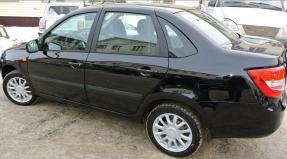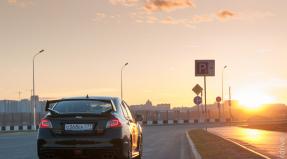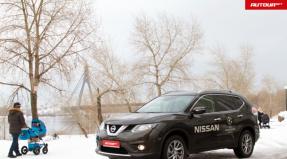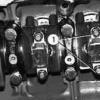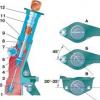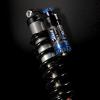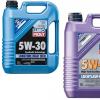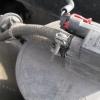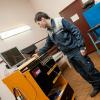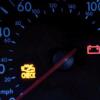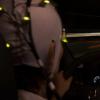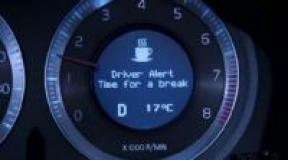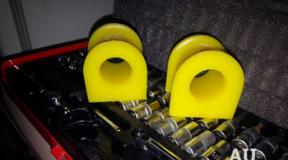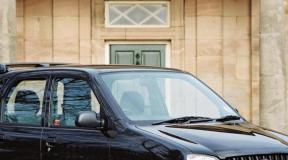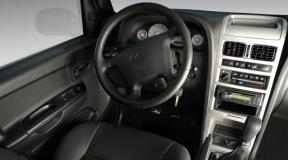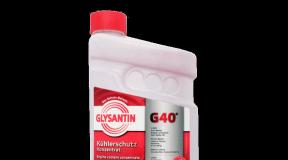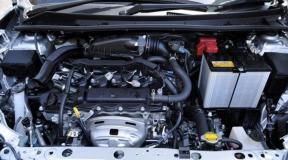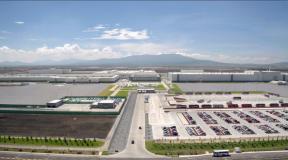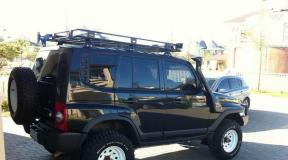What is better Subaru Forester or. Comparative test drives Subaru Forester
Over the past year with a little, I was lucky enough to ride on all current Subaru models, and not just ride, but test them in a wide variety of conditions, from snow porridge and snowdrifts, to mud and slabs, from mountain trails to sandy beaches. Subaru covered thousands of kilometers and visited completely different regions, from protected areas in Moscow, to the most western points of the former USSR, from forests near Moscow and racing tracks, to Formula 1 in Sochi.
And all this time I was trying to understand what makes Subaru such a unique brand, even from my personal friends, some of my personal friends changed brands of cars every two years, but getting hooked on Subaru remained firmly faithful to the brand, and one friend had long since replaced the simple old "Forik" ", on a large German SUV every winter (and every MOT) with nostalgia recalls Subaru.
In this post, I subjectively formulated 10 reasons why people love Subaru so much. The post is not advertising, it has never been paid for, it is just that there is really something magical in this brand that sinks into the soul.
Reason # 1. Pure machine

Subaru is a car in its pure form, which rides well, in which smart four-wheel drive works just as well (and some believe that it is better), as well as in cars much, much more expensive, but at the same time savings on the interior and appearance. Although with the release of the new Subaru Outback, the savings on the cabin are no longer so obvious, and there are much more options. The main thing in Subaru is its excellent chassis, but what else do you want?
Reason # 2. Universal chassis

I don’t understand how to sell this car in the summer. But with our climate, when frosts are possible at night for six months, and sometimes it snows so much that the car still needs to be found in the parking lot in winter Subaru simply opens up. She just goes and that's it, regardless of coverage, regardless of the weather, and goes where it needs to be. Sometimes you are even perplexed that everyone around them starts so slowly or cannot really turn into a turn, and then you get out of the car and you understand, and it's icy on the street ... Subaru is often associated with severe rally cars and races, but in fact they make excellent comfortable crossovers for every day and every season.

Most often as: either the car is an off-road beast, but driving on the highway more than 100 km / h is already uncomfortable and steers like a motor boat, or, on the contrary, extremely good handling, keeps the road like on rails, but it is worth moving off even on an uneven road, like here suffering is already beginning. Subaru somehow managed to combine a good steering wheel, and comfort on the highway, and off-road qualities.
Reason # 3 Born for Bad Roads
Of course, both the Outback and the Forester are phenomenal passable cars without a frame for their class. But, most importantly, a surprisingly energy-intensive suspension, simply created for the bad roads of the Russian hinterland and dirt roads. You just go and that's it. Of course, many German cars are also quite comfortable driving on a bumpy road, but for them it is such suffering and maximum wear and tear that you involuntarily think that it is better not, but here, just drove off onto the dirt road, as if I got into my native element. And on the snowy road ... there is simply no equal.


The Subaru logo, strictly speaking, should look something like this:

In general, the capabilities of even a small XV crossover are amazing. For example, I had a chance to pull out a large frame Land Cruiser Prado from a snowdrift:

And in this video, Subaru XV easily drives up the mountain, where two prepared SUVs barely climbed 5 minutes before:
In general, from experience, Subaru stops driving only in one case - when all four wheels are hopelessly suspended in the air, evenly buried in the sand ...

Or off the track:

Subaru continues to move forward, squeaking with torque distribution systems if even one wheel clings to the surface. Some kind of magic!
And on a dirt road you are the king:


To enter the mountain is also no problem:

Even if it is problematic to climb the mountain on foot:

Here, again, only prepared lifted SUVs passed before us, attention to the vertically growing tree:

And to go down thanks to electronic assistants is not at all difficult:

The moment when you go on your side, and when you open the door to go out and take a photo, it rests on the ground:

Reason # 4. No unnecessary show-off.
Somewhere since the late 1990s-early 2000s, we began to massively forget why the car was originally invented, namely as a means of transportation, in order to move from point A to point B as comfortably, efficiently and safely as possible. Everything else: prestige , beauty, design, stitching of seats, inserts and natural materials, handles from a single piece of something ... - all this appeared much later.
Relatively recently, about 15 years ago, first of all, interior designers, marketers, and then engineers began to work on the car.

Anyone who at least once looked at the price of Subaru and sat down in the salon involuntarily said: "Eeeee ... Is this salon for this money?" and sometimes buys something at the same price, but more pretentious (we will not seriously consider buying German used premium cars). On the one hand, many say, they say, but I do not need show-off and do not give a damn about the appearance, I need the car to drive normally, but in fact then they buy it show-off, and not driving performance.
Reason number 5 Discreet

Discreet, ordinary car. Of course, a bunch of marketers roll their eyes at these words. How so? Discreet? Doesn't stand out in the stream? And is this a virtue? And here is exactly the dignity, especially for road trips to remote parts of our country. Why would you draw too much attention to yourself in a small county town? Do you need everyone to pay attention to the car in the parking lot of a roadside motel? Even discarding safety considerations, unnecessary show-off turns into the fact that everyone will try to make money on you, seeing that the car is expensive.
And here it goes well, and the chassis is excellent, but you look like everyone else.
The phrase "To be, not to seem" fits Subaru perfectly.
Reason # 6 Roomy

The Subaru Forester has two bicycles on the roof and a bunch of junk with a tent for two weeks of travel.
In the Subaru Outback, everything is the same, only two bicycles inside (!), And in the unfolded third of the seat there is also a child in a child seat. How all this could fit is still not completely clear, but the fact
Reason # 7 I "m Subarist

Subarist subarista sees from afar. Surprisingly, there is rarely such a close-knit community of fans around any brand. Only motorcyclists have something like this.
And separately, it is unexpectedly pleasant to come to the wilderness in the mountains and SUDDENLY see a parked Forester with the same sticker:

(this is not the same Forester that was in the previous photos)
Reason # 8 Employees drive Subaru

Subaru is, it seems, the only brand where employees of the company and dealers almost without exception drive cars of this brand. This is not the case with any other brand (regardless of the price). Indicative!
Reason number 9 Loyalty to the brand

There is an expression "opposites of the brain" ... Well, I don’t know, I don’t know! But the fact that Subaru is love is for sure. Find at least one familiar Subaru owner and ask him about the car ... You yourself will see how his eyes light up, and you will have to listen to a story of great love for half an hour.
Reason # 10 Amazing little things
All manufacturers have a Sport mode, this is normal, in most cases you can switch to it using the gear selector knob, while Subaru ...

Subaru simply has buttons on the steering wheel for this: Sport and Sport Sharp (just like sport and daring sport). ON THE STEERING WHEEL! From the manufacturer's point of view, one of the main functions you need, which should always be not just at hand, but under your thumb!
The fuses are not under the hood, but conveniently next to the driver's seat:

And the button for disabling the traction control is also nearby and works in one simple press. Do not press and hold, do not press and hold again for 10 seconds, but simply On-Off. Strictly speaking, on the Forester and Outback, the system does not completely turn off until the end, but at the same time it allows you to frolic around the snow and ice. A rare car on which you want to do this and simply:
Surprisingly, in fact, there are no parking sensors on any Subaru. What for? You can see everything from the front, but from the back ... well, you can add a camera to the package and everything will be perfectly visible too:

The Subaru WRX STI has an interesting feature that hasn't been seen anywhere else at all:

The lever under the gearshift knob can be used to control the center differential. Do you want Auto distribution of torque, you want a pronounced emphasis on front-wheel drive, you want - on the rear.
Subaru stubbornly sticks to the boxer engine, which is flat and has a low center of gravity. So the car holds the corner better and is generally more stable. Shown with Subaru BRZ is the world's second reference manufacturer, which also continues to relentlessly produce boxer engines:

There are only two real fans of uncompromising drive left in the world.
Subaru has an amazing navigator. This is the only built-in navigator I've used:

Well, he also knows all the streets of Serpukhov and shows roads with and without coverage.
But how ... WHERE does he know all the paths in the fields that are not always present even on the Yandex People's Map?

Marvelous!
Anyway, Subaru provokes ... It provokes somewhere to call, get there, just breathe fresh air and then go hundreds of kilometers

Or go above the clouds to Krasnaya Polyana:

Or to a high mountain near Novorossiysk

And a trifle, but very nice. Subaru is the last samurai to make a metal steering wheel nameplate:

Nobody does, even the most expensive Germans put a plastic logo on expensive leather, and here you touch it, and it is cold ... A trifle, but characterizes the attitude.
Now I understand why many once got on Subaru, no longer get off.
Technology does not stand still, providing people with a convenient and comfortable life. Today there are many means of transport. Next, we will consider two popular crossovers of Japanese origin. How are they similar, what are their differences and which car is better to choose? Subaru Forester VS Mitsubishi Outlander!
Subaru Forester entered the market in 1997 and won the honorary title the founder of crossovers... Taking the Impreza model as a basis, the car perfectly combines the features of an SUV and a sedan, and also continues to delight fans with reliable and high-quality equipment, as evidenced by sales figures.

Subaru Forester is a very popular species in the United States of America: over the past five 5 years it has been sold there more than half a million cars... During the period of its existence, 5 generations have been created. The Subaru Forester remains virtually unchanged from year to year. The design and internal technology are being improved, but no "new chips" are being introduced. In this regard, manufacturers are very conservative.

As noted earlier, Forester is practical car... The spaciousness of the salon will satisfy even the owners of a large family that lives not only within the city, but also behind it. Thanks to the famous proprietary All Wheel Drive (AWD) system and all-wheel drive, the car has high stability and cross-country ability, ease of handling and good acceleration dynamics. Subaru's symmetrical four-wheel drive provides the driver with reliable traction in all weather conditions. Easy handling is also ensured by the use of gasoline boxer engines, which have an effect directly on the center of gravity, lowering it.
Compared to the first generation, subsequent models began to have a less aggressive appearance due to the smooth lines of the body.
If we focus on the latest generation of the Subaru Forester crossover, then external changes may not be seen: a new design of headlights, bumpers and other parts. But technically, changes were made: now this car is based on the SGP (Subaru Global Platform) platform, which was created by the company for all new models.
Despite the fact that the dimensions of the vehicle remained the same as in the fourth generation, due to the increase in the wheelbase, the space for the rear passengers has increased. The ground clearance is also 220 km. Manufacturers have paid a lot of attention to the engine, working on its economy and vibration load, which is responsible for noise and shaking.
It first appeared on the market in 2001 under a different name - "Mitsubishi Airtrek", which expressed the main idea of the Japanese crossover - pleasure and ease of driving. The first generation of this model was based on the Mitsubishi ASX. The renaming of the model served to change the previous platform to GS.

Now the model had several power units, not only from Mitsubishi, but also from Volkswagen and Citroen. Now the main goal that came from the new name was to provide the client with the amenities for a long journey into uncharted lands. Which means in translation from English - a stranger. So, the second generation Mitsubishi Outlander appeared on the market in 2005.
An interesting fact is that, despite the continuation of the production of the first generation under the old name, the production of the second generation began. However, this did not bother buyers, and the model was actively in demand. The third generation Mitsubishi Outlander appeared on the market in 2016. The rear part of the body, LED headlights, wheels, steering wheel design, as well as interior decorative elements have been modified.

All major Outlander modifications are equipped with an all-wheel drive system, except for two versions with front-wheel drive in the Inform and Invite configurations with an engine in 2 liters... In the course of the next update, Outlander received a number of design improvements: increased structural rigidity of the body, updated suspension, electric power steering, soundproof glass.
Also, additional noise insulation equipment is installed throughout the vehicle. With a three-liter engine of the Sport version, the crossover is equipped with an all-wheel drive system S-AWC (Super All Wheel Control), which, thanks to good traction, allows the driver to keep the car on the chosen trajectory.
Similarities
For comparison of cars, the latest generations are taken:
- The Subaru Forester and Mitsubishi Outlander are crossovers from the same price point.
- They have permanent four-wheel drive.
- They accelerate to 200 km per hour, having the same acceleration dynamics.
- Fuel type - gasoline.
- The gearbox is a variator.
- They have approximately the same dimensions with a capacity of 5 people, the number of doors (5).
Differences
- The Subaru Forester has a fuel tank of 48 liters, while the Mitsubishi Outlander has 60 liters.
- Forester weighs 1640 kg, while Outlander weighs 1490 kg.
- They have a different layout: Mitsubishi Outlander - transverse power unit, Subaru Forester - longitudinal power unit.
- Forester has a boxer engine, Outlander - in-line.
- The luggage compartment of the Subaru Forester is larger than that of the Mitsubishi Outlander.
Rear suspension types: Subaru Forester has double wishbone, Mitsubishi Outlander has multi-link.

Which is better?
Compared models of Japanese crossovers have both similar and different features. The choice of vehicle will depend on the driver's preference for roads and driving. If the choice fell on off-road and natural exits, then Forester should be given preference for its downshift.
Outlander, on the other hand, combines easy handling and smooth running, which will be a pleasant bonus when driving on city roads in any weather conditions. Forester also has opposed powertrains, which affect the center of gravity and ensure its reduction. The car has high stability and cross-country ability, providing the driver and passengers with a safe ride.
Outlander, in turn, is suitable for city driving.: It handles corners and loose urban asphalt very well, precisely following its intended trajectory. Such a mixture of an SUV with a passenger car will provide the driver with a comfortable and economical trip around the city. In addition, the car's engine runs quietly and smoothly.
It was designed with this exploitation in mind, and hundreds of thousands of people around the world have confirmed that the Forester lives up to its name and potential. Not very flat dirt roads, snow-covered country roads, forest paths, as well as other “highways” with a soft surface - his element.
The name has been strongly associated with the concept of "four-wheel drive" for several decades, even when we talk about the sedans and hatches of this Japanese manufacturer. Others, reliability, comfort.
In one model, so many positive qualities merged together, it is amazing.
What's new for 2016 Subaru Forester:

The fourth-generation Forester was launched in 2012, with a new CVT, revised suspension, increased interior volume, a host of new safety features, and, not least, a new and improved front end design.
Time has passed, the 2016 model is on its way. Since then, no major changes have been made to the Forester, perhaps some standard functions have become a little better, and the new STARLINK infotainment system has been introduced in the car, in all other aspects the model is seriously similar to the "14" version.
What's under the hood of the IV generation Subaru Forester?

In Russia, and throughout the world, Subaru is represented by two engine options, both of them are boxer. This is either a 2.0 liter engine or a 2.5 liter aspirated engine. Oddly enough, the 2.0-liter turbo engine easily bypasses its larger counterpart in charge, producing as much as 80 hp. more than the 2.5-liter engine and putting 113 Nm more torque into rotation.
Forester economy

Let's just say that efficiency is not Forester's strong point. , which will easily give odds to Subaru. It even gets a colossal fuel economy of 6.1 liters on the highway and 7.3 in the combined cycle, in the version with a 2.5 liter engine, all-wheel drive and automatic transmission.
The car we are considering spends, according to official figures, 6.7 liters on the highway, in the maximum, sold GR configuration and 8.2 l / 100 km in the combined cycle. The difference seems small, but with long-term use it will hit the wallet "well".
The most economical of Forester's - a simple package with an atmospheric 2.0i, CVT automatic transmission, its indicators are 10.6 l / 100 km in the city, 6.3 in the extra-urban cycle. The most wasteful is a 2.0 XT, with a turbine, it consumes 11.2 l / 100 km in the city and 7 l / 100 km on the highway.
2016 Subaru Forester fuel efficiency rating(City / Track / Combined) |
||||
| 2.0i - L | 2.5i - L | 2.5i-S | 2.0XT | |
| CVT | CVT | CVT | CVT | |
| Fuel consumption in the urban cycle, l./100 km | 10.6 | 10.9 | 10.9 | 11.2 |
| Extra-urban fuel consumption, l / 100 km | 6.3 | 6.7 | 6.7 | 7 |
| Combined fuel consumption in l / 100 km | 7.9 | 8.2 | 8.2 | 8.5 |
Equipment and configuration

In Russia, the Forester is available with all-wheel drive, McPherson front struts, double wishbones at the rear and electric power steering.
Subaru Forester is available in Russia in five trim levels: VF, BM, CB, CS, GR.
The price tag starts from 1.499.900 before 2,019,900 rubles.
Description of some configurations:

VF: The basic basic configuration, at the moment (09/07/2015) starts from 1,599,900 rubles, with discounts the cost will decrease by 100,000 rubles. The engine in this configuration is 2.0 liter, 150 hp, transmission is a variator. The complete set includes:
-Color metallic or mother of pearl
-17-inch steel (or aluminum) wheels
-Halogen headlights
-Fog lights
-Daytime Running Lights
-Retractable headlight washers
-Rear fog lamp
-Windscreen wiper with adjustable interval for intermittent operation and special design of brushes
- Rear window wiper with intermittent operation
- Glasses with UV protection: windscreen and front side windows
-Roof spoiler
INTERIOR
-Steering column, adjustable in angle and reach
-Seats with fabric upholstery
-Heated front row seats
-Pockets in the backrests of the front seats
-Mirrors in sun visors
-Map reading lamps
- Compartment for glasses in the roof console
- Tray in the center console
-Boxing in the armrest
-Side door pockets with integrated bottle holders
-Cup holders in the center console
- Seats of the second row, folding in a ratio of 40/60
-Luggage compartment lighting
-Set of hooks for attaching and hanging luggage
-Retractable luggage compartment cover
COMFORT
-On-board computer
-Electric windows
-System of remote control of door locks
-Three 12V sockets for connecting additional electrical equipment (in the center console, in the armrest box and in the luggage compartment)
-Remote opening of the gas tank flap from the passenger compartment
MULTIMEDIA
-Multifunctional steering wheel
-AUX and USB connectors for connecting external devices (in the armrest box)
CLIMATE CONTROL
-Climate control with anti-dust filter
- Air ducts supplying warm air to the feet of the rear passengers
-Heated area of the windshield wiper blades
-Heated side mirrors
-Electric heated rear window with timer
CONTROL AND ACTIVE SECURITY SYSTEMS
-4 channel anti-lock braking system (ABS) with electronic brake force distribution (EBD)
-Assist with emergency braking (BA)
-System to ensure the priority of braking
-Dynamic stabilization system (VDC), switchable
-System help when starting from a place on a slope
PASSIVE SECURITY SYSTEMS
-Frontal airbags
-Side airbags for the front row of seats
-Safety curtains
-Knee airbag for driver
-Front seat belts with pretensioners and load limiters
-Height-adjustable seat belt anchorages (for driver and front passenger)
-Indicator not fastened seat belt (for the driver)
- Seat belts with three-point attachment for three passengers in the rear seat
-Front seat design to reduce the risk of neck whiplash
-Headrests for three passengers in the rear seat
-Crash-proof brake pedal
-Steering column support beam
- Side door reinforcement beams
-Blocking the rear doors from opening from the inside ("child lock")
-System ISO-FIX for the installation of child seats (with anchorage straps)
-Spare wheel ("dokatka")
-Immobilizer engine
BM: The next configuration starts at RUB 1.684.900. For add. board on the car will appear:
Xenon headlights with automatic beam level control
Seats with leather upholstery
-LED turn signal repeater in side mirrors
-Electric tailgate
-Cruise control
-Light sensor and rain sensor
-Two USB ports
-Si-Drive Intelligent Drive System (Dual Mode)
CS: The cost is 1,824,900 rubles. Supplemented by:
-Seats with leather upholstery
-Keyless entry and engine start button
GR: And finally, the most expensive equipment: GR. She is pampered by owners of the most advanced modifications, 2.5i-S and 2.0XT. The first of them costs 2,019,900 rubles, the second 2,199,900 rubles.
-18-inch aluminum alloy wheels
- Electric sunroof
-Aluminum pedals
- SUBARU STARLINK infotainment system with 7.0 color LCD screen
inches, with an audio system "Harman / Kardon" with 8 speakers
-Navigation system
Which version of the 2016 Subaru Forester should you buy?

Having outlined in brief all the pros and cons of the Subaru Forester sold in Russia, to this rhetorical question "Which version of the 2016 Subaru Forester to buy?" we will not be able to give an answer. A matter of taste and the quality of the bank account will play here.
Let's just say that Subaru has well thought out its configurations, with each subsequent step, the buyer receives several useful and necessary bonuses in his own, which of course is very good.
2016 Subaru Forester Important Facts & Specifications:
Price: from 1.499.900- 2.019.900 rub
Trunk volume: 1548 Liters
Fuel type: AI-95
Volume of the tank: 60 liters
Transmission: 6-speed variator
Engines: 2.0 liter boxer (naturally aspirated / turbo); 2.5 liter naturally aspirated
Drive unit: Full AWD
Curb weight: 1.497 kg - 1.655 kg
Ground clearance: 220 mm
This Subaru must have four-wheel drive. If you come across front-wheel drive, then this is the acquisition of obvious freaks who want to troll people on pokatushki. Fortunately, in the USA, the Impreza was sold in this form. Forester should be strictly all-wheel drive, and it is not so important that it is permanent full only for cars with manual transmission, and for cars with automatic transmission it can be different.
Contrary to popular belief that the automatic transmission relies only on a plug-in four-wheel drive, this is not the case. The TZ automatic transmission series assumes the presence of a plug-in drive, and the TV automatic transmission series assumes a permanent full drive.
If you figure it out, the shank of the boxes is interchangeable, so no one bothers to put a permanent all-wheel drive on the TZ automatic transmission - such an alteration is quite popular. True, it does not give much gain in dynamics, but the car will crawl more confidently through the mud and be less afraid of breakdowns.
In the photo: Subaru Forester S-Turbo (SF) "2000-02
In general, all-wheel drive elements are very well thought out and well executed. Of course, the CV joint and propeller shaft sometimes require maintenance, but the main attention will have to be paid to the rear gearbox. It can be "turned off" if the supercharged engine is fully operational (which happens not so often, ha-ha!) But more often it simply misses the oil level due to the current oil seals or forget to change this oil, but do not forget to drift in winter ... If the rear axle drive clutch wedges, then the chances of a happy life for the rest of the transmission elements are almost zero.
With the "mechanics", in general, everything is fine too. Boxes of the TY series, and even with an optional "lowering", have established themselves as very reliable. But let's face it: with powerful motors and the "racers" they do not live so long and happily, and they tolerate more than 300 Nm of torque very poorly. If the motor produces 350-400 Nm, then the box turns into a "consumable". However, despite the sports fame, there are not so many really powerful cars in the population.
"Ponizhayka" was installed only on boxes for atmospheric engines: if you want to have this option on a turbocharged car, then remember that one careless movement can twist shafts, a gearbox or something else. The transmission simply cannot withstand such a moment.
With automatic transmission, everything is a little more complicated. Despite the apparent availability of choice in the form of "automatic machines" of the TZ and TV series in four different versions, there is, in fact, one box here. On machines before 1998, you can find its early version R4AX-EL, aka TZ1A3ZS1AA, later they put a seriously modified box of the 4EAT series, differing mainly in hydraulics and electronics.

This box has a very respectable age: Subaru put it in from 1988 to 2011. Of course, the design has been worked out to the smallest detail, and this is one of the most reliable automatic transmissions in the world. The secret of success lies in a separate replaceable external fine filter (spin-on, like in motors), in a sophisticated cooling system and carefully thought out operating modes. Electronics simply does not allow this box to be tortured. True, Subaru with automatic transmission is very thoughtful, and fuel consumption smoothly goes beyond the level of 16-18 liters per hundred in the city, but you can "burn" without fear for the health of the automatic transmission, and there will be no difficulties on a long journey. Here, even the valve body solenoids are collapsible, and in case of contamination, they can simply be cleaned.

Of course, we have enough "unique" ones who finished off such a reliable automatic transmission. Most often, we are talking about the wear of the blocking linings of the gas turbine engine to the adhesive layer with contamination of all filters that someone did not want to change in time. Further, a drop in pressure begins due to contamination of the valve body and serious mechanical problems.
The rear hub bearings and Low Clutch drum are also potential replacements for racing enthusiasts. With proper operation with runs of 250-350 thousand, the blocking pad for the gas turbine engine will need to be replaced, while it is worth changing the rubber seals of the box, pistons and the line pressure solenoid assembly. After these procedures, the box will pass the same amount.

Of course, the oil must be changed at least once every 40-50 thousand kilometers, and the automatic transmission keeps the engine torque even better than the "mechanics". In any case, 450 Nm is not too much of a problem for her. Unless you additionally have to take care of cooling and change the oil more often along with the linings of the gas turbine engine.
Motors
It is believed that the opposed "with a low center of gravity" is the top of the design idea and a very reliable unit. Not at all. A strange design, in which sometimes there are 4 camshafts for 4 cylinders, it is striking in size, complexity of repair, specific layout and low resource.
In addition, the quality of the cooling system components is below any criticism: radiators flow at the seams, pipes require mandatory replacement at the age of ten, fans simply die by that age. And everything is not so cheap, which is why these parts are often changed for very conditionally suitable elements from "showdowns".

The exhaust system is also not happy. The exhaust rots just like on a Zhiguli, and if the car is more than 10-12 years old, then most likely the entire system has already been replaced a couple of times or thoroughly welded.
To top it off, the EJ 20 engines in different versions could have very different control systems and attachments, and given the style of service, frequent replacement of units and other Subar "nuances", this can become a serious headache for the owner. It is not uncommon for another Forester owner to ask experienced “pros”: “Tell me what kind of motor I have”.
Timing belt EJ202
price for original
4 611/6 851 (reinforced) rubles
The main engine options are the EJ 202 and EJ 20J, with two camshafts and naturally aspirated. The EJ 205 is a four-camshaft supercharged version with several power options. And finally, the EJ 251 with two camshafts and naturally aspirated, but with a volume of 2.5 liters. Much less common are serial cars with four-shaft 2.5-liter engines of the EJ 25D series, which were produced for only a year and a half. There are still heels of other exotic options, but it is almost unrealistic to meet them.
Of course, all engines are boxer. The timing belt is driven by a belt, the injection is electronic.
The supercharged version has a small MHI TF 035 turbine, while the more powerful versions already have a compatible MHI TD 04 or even TD 05.
 In the photo: Under the hood of the Subaru Forester S-Turbo (SF) "2000–02
In the photo: Under the hood of the Subaru Forester S-Turbo (SF) "2000–02 To replace the spark plugs, the motor does not need to be removed, these are bikes. True, the operation is not as simple as on a normal car: you have to remove the intake, air filter, washer reservoir and battery. And only then, with the help of the great and mighty, ratchet, candle wrench and cardan (for SOHC motor), the candles can be replaced. There are no hatches in the wings, the spar will still interfere. Forester is not your Legacy.
Radiator
price for original
16 642 rubles
Naturally aspirated engines 2.0 SOHC can be called the most resourceful. In any case, "the problem of knocking the fourth cylinder" occurs on them only with runs for 150-250 thousand kilometers, and the engine can pass all 300-400 thousand kilometers before being repaired. The notorious "knock" is a characteristic sound when working on a cold one, which, having appeared, gradually progresses and begins to manifest itself in a warm state. The history of the "knocking" engine ends usually with a drop in compression in the fourth cylinder or burnout of the piston. An autopsy most often shows almost a whole hone, but at the same time a solid ellipse at the sleeve.
It is better to replace the oil pump with the so-called "11 mm" after a run of 100-150 thousand kilometers. The gears of the standard pump are 10 mm thick, and the STi pump is 12 mm thick, so at a minimum, polishing and replacement of the cover and gears with a minimum clearance will be required.
 In the photo: Under the hood of the Subaru Forester 2.0GX (SF) "2000–02
In the photo: Under the hood of the Subaru Forester 2.0GX (SF) "2000–02 In addition to the appearance of ellipticity in the fourth cylinder due to miscalculation in the liner design and overheating, the owners risk getting the liners to rotate due to the missed oil level and high load on the liners.
Subaru engines have a complicated relationship with oil. They do not like low-viscosity oils, and SAE 40 or even SAE 50 is considered the optimal value for running motors. Secondly, the oil level is critical for them. The volume of the crankcase is small, and if there is not enough oil, then it is easy to grab oil starvation and cranking the liners when cornering. But if you pour more than a liter and a half, then the engine can suddenly give out a solid puff of smoke in a turn, and along the way - ruin the catalyst and get a portion of carbon deposits on the rings. And the motor also likes to squeeze out the oil seals when overflowing, and oil baths are also not useful for pistons. And yet, when driving on asphalt ring roads, it is better to take a chance and pour too much than to get up with the liner turned.
Tensioner
price for original
6,177 rubles
Another weak point of boxer motors is the long timing belt with a complex tensioning system. Any damage to the rollers or failure of the tensioner will lead to phase drift. On SOHC motors, there is a limiter above the crankshaft gear, which prevents the belt from jumping over and breaking if it loosens. It is better to take it off, then a weakened belt has a chance not to break. True, the risk of the remnants of the drive belt getting under the timing belt increases.
A limiter is necessary for DOHC motors: they do not tolerate phase jump well, you can even bend the valves, and not on the piston, but simply on another valve. By the way, in an accident, the timing mechanism is damaged easily and naturally. You do not even need a strong blow, it is enough to fly into the fence, and one unsuccessfully caught picket will knock out the motor tightly.

In addition to these difficulties, there are also regular leaks of gaskets, and due to the peculiarities of the layout of the motor, the engine will have to be removed to eliminate them, and an attempt to get off with "work on site" is fraught with the ingress of large portions of dirt into the motor.
Leaks mask the oil appetite of the engine, which can progress very quickly - it is enough to "warm up" the engine once with an unsuccessful oil. And how the motor is disassembled and "capitalized" cannot be told here: you will have to put an "18+" badge or close access to children. Believe me, the process is very intimate and confusing.
Engines with a volume of 2.5 liters are noticeably more sensitive to the correct operation of the cooling system. And the EJ 25D motor was generally discontinued due to overheating of the fourth cylinder for no particular reason. True, they learned to solve the problem by installing an improved pump and an organizer of flows in the block, but if the master has a chance to make a mistake, he will make it.
If the motor also has a turbine, and even more so it is a motor with a DOHC head, then be strong and do not be discouraged. "Knocking" can be expected after 70 thousand run, so overhauls will be a frequent occurrence. Usually, such motors do not run without repair for more than 100-150 thousand kilometers. The load on the liners is higher, so the chances of "lifting" the crankshaft are also much higher.
The control system is characterized by capriciousness and a variety of options. Detonation is a common occurrence on EJ 205 engines.
A higher heat load threatens the integrity of not only radiators and pipes, but also the cylinder head gasket. There were cases when a piece of gasket was "blown out" due to local overheating under load, and a leak opened.
 In the photo: Subaru Forester 2.0GX (SF) "2000-02
In the photo: Subaru Forester 2.0GX (SF) "2000-02 But there is no need to be afraid of the turbines: all the regular ones are very inexpensive, and they serve for a long time. But the supercharging control system on Subaru is strikingly flawed. There is no normal regulation, everything is at the level of the 80s: one valve (not too reliable Pierburg 7.00326.03.0) and the need for preload adjustment. The bypass is easily connected incorrectly and is rude. The work of the ECU is not distinguished by its elegance either. And do not forget that there are versions of the motor with a conventional mechanical choke. As a result, there is frequent detonation and great chances to disable the engine even before the small resource that it should have.

Enough about the magic opposite. Nothing good can be said about him. Nobody (except for Porsche) uses such engines in large quantities for a reason.
Summary
This Forester is a somewhat strange car. Simple, reliable and even charismatic solutions in it coexist with frankly unsuccessful, cheap, uncomfortable and expensive to operate. The Forester SF is a 100% fan-made car. You need to love her very much for her charisma and image in order to forgive all her shortcomings and even try to defend her in public. For maintenance, you will need the help of a specialized community, without its support it will sometimes be difficult.
 In the photo: Subaru Forester S-Turbo (SF) "2000-02
In the photo: Subaru Forester S-Turbo (SF) "2000-02 If you are a fan of strictly left-hand drive, then I have bad news for you: the choice is noticeably narrowing, and the price is rising. From a purely practical point of view, the car with a two-liter "aspirated" and a good body looks good, but there are surprisingly few of them. Still, most believe that Subaru should be exclusively supercharged. Or at least with a fairly powerful 2.5-liter boxer, and fans simply do not care about the practicality of the choice.

So, buy yourself a Forester SF?
Hello dear readers.
I buy a car and do not know what to take, I looked closely at two cars: Subaru "Outback" and "Forester".
Which of the cars will be less expensive and more reliable in terms of spare parts. And in general, what are the "pitfalls" of these cars. Which car model is worth taking a closer look at.
I found an article on the Internet for comparison.
Japanese cars are very popular in our country. First of all, they are loved for their reliability. Statistics show that these cars really break down less. But you can't just go and buy a Japanese car. You need to decide on the brand and model, because the assortment of Japanese cars is simply huge. Many who do not want to be like everyone else choose Subaru. This brand is famous for its sports cars like "Impreza". But there are also quite civilian specimens. This is Subaru Outback or Forester. What is the best choice? Quite a difficult question. In today's article we will try to compare Subaru Forester and Outback.
Description
Let's start with the first one. Subaru Forester is an all-wheel drive crossover, which has been mass-produced since 97. The machine is built on the Impreza platform. At the presentation, this car surprised many. The Japanese were among the first to make a car that looked like a station wagon and at the same time had a real four-wheel drive and high ground clearance. The Forester has proven itself as a family SUV in countries such as the United States, Russia and Australia.
"Outback" is a cross-country wagon, mass-produced since 95. This car is built on the basis of "Subaru Legacy" and is also equipped with all-wheel drive. Outback has participated in many international competitions and won them many times. This model is one of the best-selling in this class in Russia.
Design
The Forester looks more like a crossover. So, the car has a massive front bumper with cutouts for foglights and stylish lensed optics. In the center there is a black grille with the brand's corporate logo. The car features swollen wheel arches. There are plastic pads on the thresholds. Outwardly, the car does not cause aggression, but it is not devoid of embellishments. What to buy - Subaru Outback or Forester? "Forester" is suitable for respectable men of age who have conservative preferences in the matter of choosing a car.
The Outback is the exact opposite of the Forester. Such a car is already more suitable for young people. It has a fast-paced look with slanted headlights and a trapezoidal chrome grille at the front. Also, the car has an off-road plastic body kit at the bottom. There are massive roof rails on the roof. Outwardly, such a car looks more expensive than a Forester. But you need to understand that this car is 20 centimeters longer and at the same time has a lower ground clearance (by six centimeters). Therefore, for the most part, this is really a station wagon, not a crossover. And for off-road lovers, this car may not suit.
Corrosion protection
The bodies are protected against corrosion by double-sided galvanized galvanizing. It is applied completely to the entire body, including hard-to-reach places. The machine is immersed in a bath filled with zinc electrolyte under the influence of current. The zinc layer is between 9 and 15 millimeters. Is this about Subaru Outback or Forester? Both models have such protection, and the zinc coating technology does not change.
Salon "Forester"
Which is better - "Outback" or "Forester"? Consider the last car first. The interior of the "Forester" is fully consistent with its design. Among the advantages, reviews note excellent ergonomics.

The salon is spacious. There are armrests, cup holders, and the chairs are heated and have a wide range of adjustments. However, the design itself is gloomy and boring, the owners say. The interior is unremarkable. In the center there is a multimedia display, two deflectors and three air conditioning “twists”. There is another display above the console. The steering wheel is three-spoke, with inserts for aluminum and with a basic set of buttons. On the passenger side - a gloomy insert in a black gloss. The latest models have an automatic power window mode. The driver's landing is like in a real SUV. But the driver's seat has little lumbar support.
In general, the salon can be described in a few words. Everything is subordinated to the priority of sound minimalism and practicality.
Inside Outback
The difference between Outback and Forester is the interior. When you get into it, you get the feeling that this is a car of a higher class. The interior is more luxurious than the Forester's. First of all, it is worth noting the color scheme.

The interior is beige. The instrument panel also looks more interesting. The speedometer and tachometer are housed in two separate wells. The center console is no less attractive. It includes a large multimedia display and a climate control unit. Above - a pair of airflow deflectors. Plastic styled in aluminum is used as inserts. In more expensive trim levels, there are wood inserts. I must say that the interior is assembled with high quality. Nothing squeaks or rattles, the reviews say. Due to the greater length and width in the back row, passengers will feel more comfortable. But if you compare the Outback and Forester, the first has a lower roof. Therefore, for tall people "Forester" is better suited.
Trunk
Let's compare "Subaru Forester" and "Outback". The trunk volume in the first case is 505 liters. The second can take on board up to 527 liters. Which is better - "Outback" or "Forester"? The difference is insignificant.
But the trunk of the Outback itself is more practical. It is wider and deeper. There is a full-size spare wheel under the floor. There is an electric cover drive. And the "Forester" under the floor - only a stowaway. However, there is a small organizer. The boot lid is closed manually.
Technical characteristics of "Forester"
The powertrain lineup includes three four-cylinder petrol engines. These are the legendary "boxer" with a 16-valve timing system. So let's start in order. The base for "Forester" is a two-liter atmospheric unit with a capacity of 150 horsepower. Engine torque - 198 Nm. A six-speed manual transmission works in tandem with this unit. A continuously variable variator is also optionally available for this motor. So, depending on the selected transmission, "Forester" accelerates to hundreds in 10.6-11.8 seconds. Moreover, the maximum speed in both cases is 190 kilometers per hour. Reviews note that this motor is very economical. So, a hundred takes about 8-8.3 liters of fuel.
Next on the list is the 2.5-liter unit with multipoint fuel injection. It generates up to 170 horsepower. The torque is 235 Nm. A non-alternative variator works in tandem with this motor. So, the car accelerates to a hundred in 9.8 seconds. The maximum speed is limited to 197 kilometers per hour. Fuel consumption - 8.3 liters per hundred in mixed mode.
A two-liter turbocharged engine with direct fuel injection is available in the top trim levels for the Japanese Forester. So, it develops 241 horsepower and 350 Nm of torque in the range from 2.4 to 3.6 thousand revolutions per minute. The Lineartronic box (this is a continuously variable variator) operates in tandem with this engine. The car accelerates to a hundred in 7.5 seconds. And the maximum speed is 220 kilometers per hour. Fuel consumption, according to passport data, does not exceed 8.5 liters per 100 kilometers in a combined cycle.
Which is better - "Outback" or "Forester"? Consider what the owners say about the elasticity of the stroke. Reviews note that the capabilities of the Forester engines are not limitless. So, the car accelerates well to one hundred kilometers per hour, but "blown away" on the track. The dynamics are especially weak if there are several passengers in the cabin. But in the city these characteristics are enough.
Specifications "Outback"
This off-road wagon can be equipped with two gasoline boxer engines to choose from. There are also two transmissions. It is a six-speed automatic and V-chain variator.
The base for the Subaru Outback is a 2.5-liter naturally aspirated four-cylinder engine. The engine is distinguished by multipoint injection and a 16-valve timing chain mechanism. So, the maximum engine power is 175 horsepower. The torque is 235 Nm. Acceleration to hundreds - 10.2 seconds. The maximum speed is 198 kilometers per hour. Fuel consumption is acceptable, owners say. So, for a hundred, a car spends 7.7 liters of fuel on average. In the city, it is quite possible to keep within the top ten.

A six-cylinder naturally aspirated engine is available in the luxury version. With a working volume of 3.6 liters, it develops 260 horsepower. At the same time, the unit is distinguished by a multi-point fuel supply and a 24-valve timing mechanism with two camshafts. Engine torque - 350 Nm. The dynamic performance is impressive. The car accelerates to hundreds in 7.6 seconds. The maximum speed is limited to 235 kilometers per hour. Fuel consumption - 7.5 liters on the highway and 14.2 - in the city.
Which to choose - "Forester" or "Outback"? Let's see what the owners say about the Outback motors. Reviews note that "Outback" feels more cheerful on the track. The car confidently takes acceleration and does not lose dynamics at a speed of more than 100 kilometers per hour. This allows you to confidently overtake on the track. But the fuel consumption of the 3.6-liter engine is surprising. Not everyone is ready to put up with his gluttony.
Chassis
Since the Impreza served as the platform for the creation of the Forester, its suspension is similar. Front - MacPherson struts. There is a multi-link at the back. The steering is a rack with an electric amplifier. The brake system is only disc (front also ventilated). Already in the database there is an ABS and an ESP system.
As for the Outback, it is based on the Legacy and has the following suspension scheme. Front - MacPherson struts, rear - double wishbones. Also, the design uses two anti-roll bars.
A key feature of both cars is all-wheel drive. It is implemented by means of a multi-plate clutch that is electronically controlled. This system is intelligent, with dynamic thrust distribution. When driving on asphalt, the torque is distributed in a 60:40 ratio. But depending on the traffic situation, this moment can change in one direction or another.
Test drive cars
Subaru is more than just a brand. In every country there are fans and fans of this brand. And all thanks to its driving performance. And in this matter, both cars did not disappoint. The machines have a phenomenal ride. But still, if you compare the Outback and Forester, the latter has a more elastic suspension. And "Outback" literally "hovers" over the road. But there were some drawbacks. So, in "Outback" the owners celebrate the "cotton" management. Although the Japanese have reduced the steering gear ratio, the situation has not fundamentally changed. As the speed increases, the connection between the road and the steering wheel is lost. Which is better - "Outback" or "Forester"? There is no need to rush to conclusions, because the Forester has the same problem, but the latter, in addition, rolls in corners due to its high ground clearance. In general, the suspension characteristics are tuned for comfort rather than aggressive driving. And since the roads are not even everywhere, this is a very big plus. Due to this, many owners are ready to put up with problems in the handling of the Subaru.
Off-road qualities
The vehicles are equipped with an auxiliary system X-Mode, which transfers the engine and gearbox to off-road mode. In practice, this is an analogue of a differential lock. Also, both cars have a hill descent assistance system.
How do these cars perform off-road? The Forester has more options due to its high ground clearance. "Outback" is low and often clings to the bottom. You especially need to be careful with bumpers. The Forester has better geometry and larger angles of arrival. By the way, there is a special L mode on the variator. This is a kind of downshift that allows you to slowly move up a hill with high torque.
Price
Which is better - "Outback" or "Forester"? The latter is offered in eight trim levels, among which the base one costs 1 million 660 thousand rubles. This price includes:
- Stamped 17 '' rims.
- Seven pillows.
- Four power windows.
- Heated front seats.
- Multimedia system.
- Climate control.
- Help system when starting up the hill.
The top Forester costs 2 million 600 thousand rubles. As for the "Outback", it is available at a price of 1 million 750 thousand rubles. This price includes:
- Cast 18-inch wheels.
- Leather interior.
- Heated front and rear seats.
- Dual-zone climate control.
- Rain and light sensors.
- Rear View Camera.
- Electrically operated sunroof.
- LED optics and other options.
The maximum configuration is available at a price of 3 million 300 thousand rubles. This includes a heated steering wheel, lane keeping assist, automatic braking, blind spot control, adaptive cruise control, electric seat drive, but most importantly, a top-end 260-horsepower engine.
In the pricing policy, Outback versus Forester is defeated. But in terms of the level of equipment, the latter clearly loses.
Summing up
The design of both cars turned out to be attractive. Still, the "Forester" gives the impression of a predatory, compact crossover. And the Outback is more like a city station wagon. Inside, things are different. Salon at "Outback" is more luxurious, and more options are offered for it. But I must say that in terms of comfort and ergonomics, these salons are very similar. The engines on both machines are reliable and fast (within the class). But on the off-road, the Forester shows the best characteristics. On the highway, cars go about the same. But due to the low ground clearance and the increased base "Outback" is better controlled and "swallows" irregularities. No suspension noise.
But what to choose - "Subaru Forester" or "Subaru Outback"? This is one of those cases when there is no definite answer to the question. But if we consider the option of buying a 2.5-liter Forester, it is better to pay a little extra and buy an Outback, albeit with a basic engine. It is not for nothing that the manufacturer so differentiated these machines with a pricing policy. The difference of 250-500 thousand rubles is noticeably felt in the level of equipment and comfort (this concerns the Outback). But it is unlikely that he can recoup half a million rubles of the difference when choosing a two-liter "Forester". Therefore, everyone decides for himself what he needs. Either the cheap Forester or the more luxurious and expensive Outback. But in any case, these cars will not disappoint the buyer. Subaru cars have taken root well in our country, especially in its middle part. Four-wheel drive is what we need on our roads. And it will be difficult to find something else, no less practical and universal.
